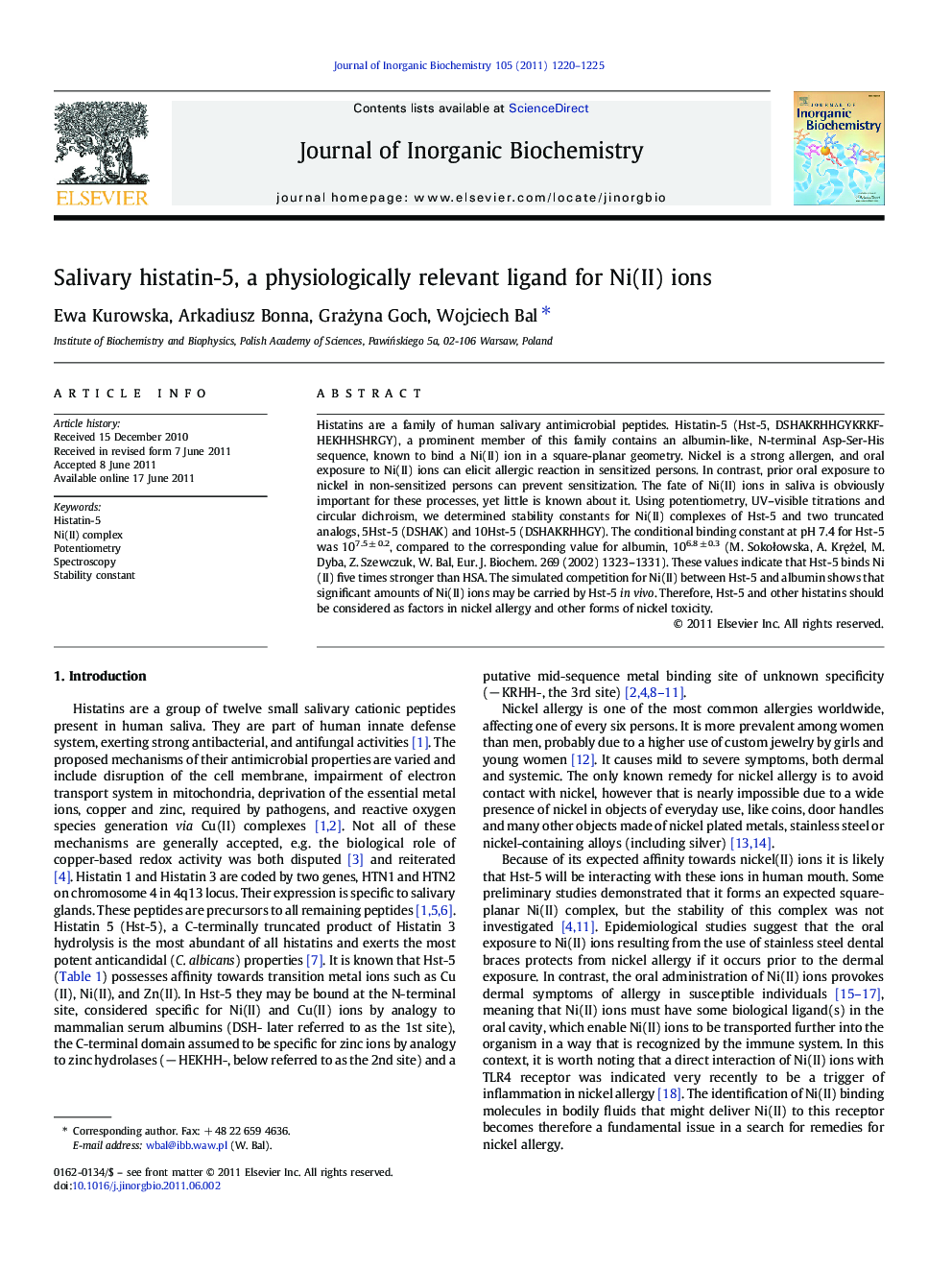| Article ID | Journal | Published Year | Pages | File Type |
|---|---|---|---|---|
| 1316153 | Journal of Inorganic Biochemistry | 2011 | 6 Pages |
Histatins are a family of human salivary antimicrobial peptides. Histatin-5 (Hst-5, DSHAKRHHGYKRKFHEKHHSHRGY), a prominent member of this family contains an albumin-like, N-terminal Asp-Ser-His sequence, known to bind a Ni(II) ion in a square-planar geometry. Nickel is a strong allergen, and oral exposure to Ni(II) ions can elicit allergic reaction in sensitized persons. In contrast, prior oral exposure to nickel in non-sensitized persons can prevent sensitization. The fate of Ni(II) ions in saliva is obviously important for these processes, yet little is known about it. Using potentiometry, UV–visible titrations and circular dichroism, we determined stability constants for Ni(II) complexes of Hst-5 and two truncated analogs, 5Hst-5 (DSHAK) and 10Hst-5 (DSHAKRHHGY). The conditional binding constant at pH 7.4 for Hst-5 was 107.5 ± 0.2, compared to the corresponding value for albumin, 106.8 ± 0.3 (M. Sokołowska, A. Krężel, M. Dyba, Z. Szewczuk, W. Bal, Eur. J. Biochem. 269 (2002) 1323–1331). These values indicate that Hst-5 binds Ni(II) five times stronger than HSA. The simulated competition for Ni(II) between Hst-5 and albumin shows that significant amounts of Ni(II) ions may be carried by Hst-5 in vivo. Therefore, Hst-5 and other histatins should be considered as factors in nickel allergy and other forms of nickel toxicity.
Graphical abstractHistatin-5 is a strong competitive Ni(II) ligand, forming a square-planar complex.Figure optionsDownload full-size imageDownload as PowerPoint slideResearch highlights► Human salivary peptide Histatin-5 form a a square-planar N-terminal Ni(II) complex. ► Its binding constant, 107.5 at pH 7.4, is five time higher than that of albumin. ► Histatin-5 is a likely transport molecule for toxic Ni(II) in human saliva.
